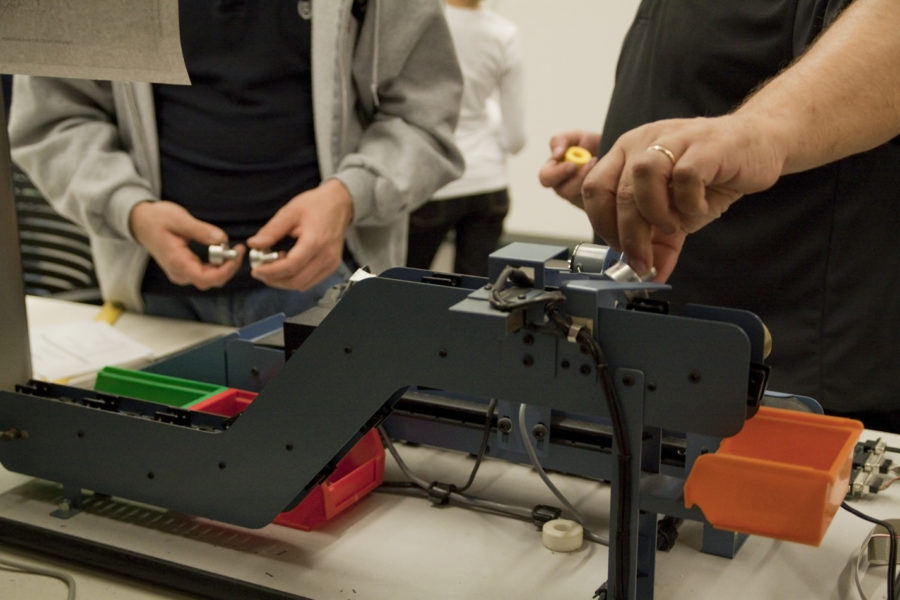Open Lab Night showcases engineering department research
November 10, 2010
Labs were open in Coover Hall for Open Lab Night on Wednesday, allowing the public to see research being done in the engineering department. Studies in the labs dealt with research using technology to help reach their goals in solving problems that the world faces.
Jin Xu, graduate student in mechanical engineering, showcased the effect of high intensity in ultrasound. Xu is testing to use AR gels to mimic biological tissues.
If these techniques are successful, they can result in surgeons doing operations on patients without making any incisions, Xu said. Xu hopes that these techniques can be raised to actual practices in the near future.
“We are trying to push this technique so that it can reach the level that it can be used in real clinical applications,” Xu said.
Santosh Pandey, assistant professor of electrical computer engineering, showed different types of microfluidic devices, which are used to study how diseases affect plants, animals and humans.
“We are able to observe a phenomena that was not possible to see before,” Pandey said. “We designed this unique set of microfluidic chips and platforms that allow us to see a lot more things that were not obvious before.”
According to Pandey’s research, the other ways of killing parasites are in fields that are very expensive.
“Our ultimate goal is to find out if there is a faster way to develop new drugs,” Pandey said. “We are trying to increase the amount of information we can get from one single experiment.”
With the new technology, Pandey has been able to run multiple experiments at the same time. It allows users to obtain a piece of data in an hour, which used to take a as long as a day, Pandey said.
“There is a need in pharmaceutical companies to find out faster ways to discover new drugs,” Pandey said.
Pandey hopes engineers can apply their engineering skills to solve problems in biology and medical sciences.
“We are applying most of the engineering techniques and using it to solve hard problems in biology,” Pandey said.
Pavel Kazatsker, graduate student in human computer interaction, showcased two demos on robots emulating the behavior of small children. One robot was programmed to push buttons and process which button to push.
“The reason we make the robots act like children is because if they can learn correctly then they can adapt to fast environments,” Kazatsker said. “The robots are assigned household tasks, which are small steps toward the direction of them learning correctly and adapting.”
Nicola Elia, associate professor of electrical and computer engineering, headed an experiment where undergrad students flew remote-controlled helicopters with a Wiimote controller.
Students used the same system that Wiis use. It’s used to stabilize the remote-controlled helicopter, Elia said.
The goal of the project is to be able to create intelligence in vehicles for rescue operations in the near future.
“We are trying to learn about both control and communication of the system by creating new trends,” Elia said. “These new trends are becoming a very good way to teach the students.”







